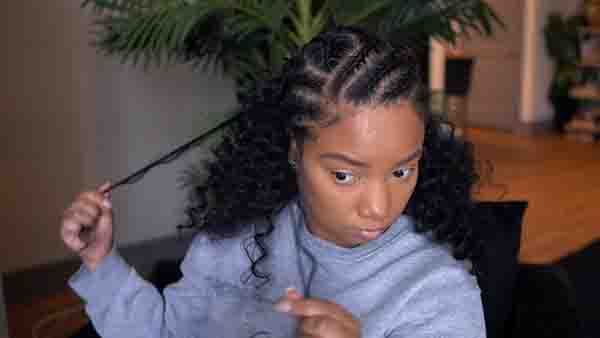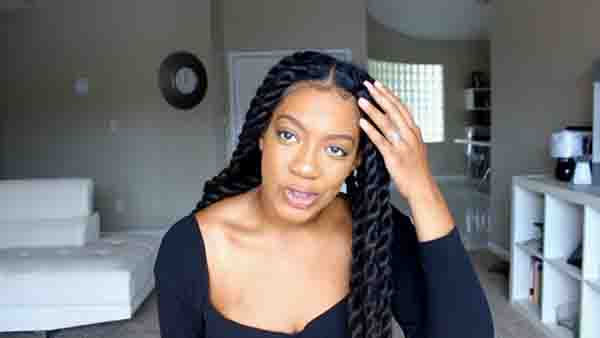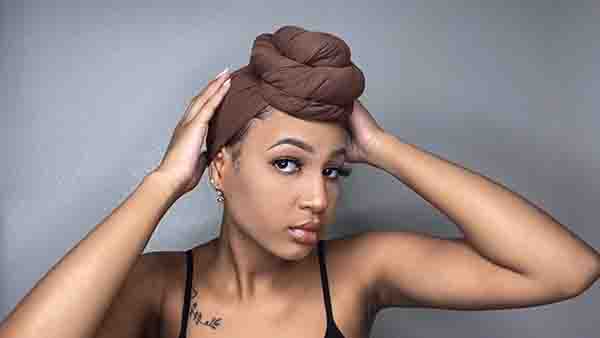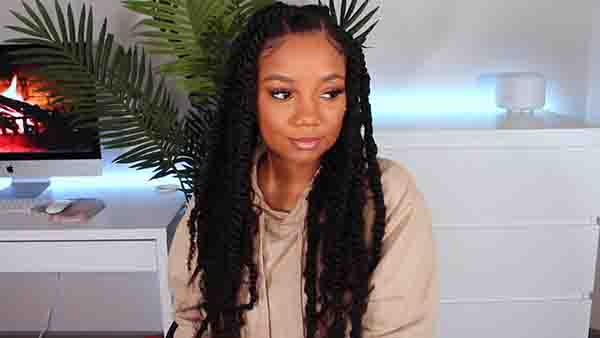If you’re from Africa or have African origin, you should know pretty well about the protective style of hair. Nevertheless, it’s pretty popular with most people now.
Even if the style is named “Protective” since it protects your hair, very often, it can become the reason to make your hair worse!
Pretty terrific, right? What should’ve protected the hair is the culprit now! But how do you even know if the protective style is bad for your hair or not? What are the signs your protective style is really harming your hair?
There can be split ends, dull hair, infections, and so on. Let’s get to know them in detail.
What Should You Consider When Choosing A Protective Style

When you’re thinking about doing a protective style with your hair, you may become confused about what style you should choose. There are some factors on which you can depend on for getting the perfect style for yourself.
Those factors include the type and density of your hair, your future plans, and perks that come with having a protective style. For example, if your hair is thin or damaged, you shouldn’t get a protective style.
About your future plan, you should consider if you’re going to go swimming or do something that will put a lot of pressure on your hair, avoid protective style and do a simpler one.
Moreover, protective styles are hard to maintain, so if you’re not sure about how you should take care of it, have any hair problems, or are not patient enough to care for it regularly, then you should avoid getting any protective style.
And again, decide how long you want to keep your style on. Because for different duration, different types of protective styles are done, the duration varies from one week to 2 months.
What are The Signs That A Protective Style is Causing Harm to Your Hair

What do you think can happen to your hair if protective styles are done wrong? Many things can happen, but the end result is almost the same, excessive hair fall. However, let’s get to know how this happens.
1. Excess Friction
When your protective styles are done very tightly or wrong in other ways, there can be excess friction on hair and it’ll lead to hair damage. There’ll be more split ends on your hair and they’ll break easily.
2. Tangles and Single Strand Knots
You may find there are tangles even in the braids and single-strand knots very often. If this happens, then the protective style isn’t perfectly done to you; it’ll make your hair fall out at a faster rate.
3. Excessive Itching in Protective Styles

When you do the wrong protective styles, your hair may feel tension at the root. It can lead to scalp irritation and will itch a lot. Excessive itching is so annoying and your hair will fall out faster.
4. Folliculitis
Folliculitis is one of the problems with protective hairstyles. It happens when the hair follicles become inflamed by bacteria.
If you see small red bumps on your scalp that look like acne; it’s probably folliculitis. It also happens all over the body with body hair.
Since you can’t often take care of your hair because of tight braids, it can lead to folliculitis after getting the infection.
5. Bald spots

Since there’s more tension and hair feels tight pull when braided tightly for the protective style, it actually becomes unprotected.
The hair falls out more quickly and the hair follicles get more pressure and you may see bald spots. It’s pretty horrible, as you can’t even go out to functions and parties with bald spots.
6. Fungal Infections
Excessive tension of hair can lead to damage of hair follicles and there can be cases of fungal infections to the vulnerable scalp. It can also make hair more prone to fall out at a faster rate.
7. Excessive Pain and/or Pressure
If you feel excessive pain on your scalp or feel pressure, it’s because the hair is braided too tightly and follicles are getting stressed over it.
So, make sure to change the style as soon as possible. Otherwise, your hair will fall out quickly.
8. Excessive Breakage or Shedding
Excessive shedding or breakage happens when you do the braids in such a way that they face a lot of friction.
Maybe you spend all your time wearing a rough cap covering all the hair or sleeping on a rough pillow. It’ll give you noticeable split ends quickly.
9. Unmanageable and frizzy hair
When your hair isn’t styled properly in a protective way, the braids become unmanageable and frizzy hair doesn’t stay in the same place. The whole scalp may look messy and lead to more hair fall later.
10. Hair that feels dry/matted and brittle
If your hair looks matted, brittle, or dry, it needs proper care and cleansing. In case you don’t take action fast, your hair will become weaker and fall out. Also, there’ll be more hair damage and you’ll see more breakage.
11. Hair Appears Dull
Hair becomes dull when you can’t wash or take care of it regularly. To make your hair lustrous, it’s necessary to use care products once in a while. Since your protective style stops you from deep nutrition or cleaning, hair appears dull.
12. Giving off an odor
When you keep your protective hairstyle on for a long time, you can’t wash the hair properly for many days. It can lead to a bad odor on your scalp and hair. You may also attract more fungi or bacteria this way.
Pro Tip for Moisturizing Hair When Wearing Protective Styles

If you want the protective style actually to protect your hair and make it look stunning, you’ll still need to moisturize daily.
To keep your hair soft and healthy, spritz a leave-in conditioner on it daily and use hair oil on your scalp. Also, your hair will be well-moisturized and much easier to take down when the time comes!
Some Lightweight Styles or Low Tension for Hair Protection

In case you’re looking for low-tension or lightweight styles to protect your natural hair, you can try these styles or methods. Such as –
- Wigs – They can give you any kind of look you’re interested in without doing any problem to your natural hair.
- Clip-in hair extensions – It’s a good way to protect your hair while making it look bouncier.
- Crochet locks – This braid gives minimal pressure on the scalp, so it’s good for your hair.
FAQs
How do crochet braids distribute weight more evenly compared to other styles?
Since the crochet braids are held together by individual bases of cornrowed hair underneath, they distribute weight more evenly compared to any other style.
Related Articles:
- Are Weaves Bad For Your Hair
- What Are Bantu Knots
- Is Crochet Hair a Protective Style
Verdict
If you see any of the signs that your protective style is really harming your hair, you should avoid making braids for a while. Let your precious hair rest for a while; don’t put them under constant stress again so fast.
It’ll be best if you contact a hair specialist to get further instructions on this and take the necessary steps to make your hair better.
But don’t take random advice from people and put the hair under more stress if you want to avoid signs your protective style is really harming your hair.

